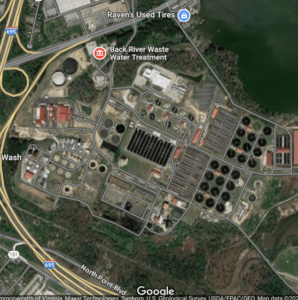
Date: March 15, 2023
Location: Baltimore, Maryland (USA)
Address: 8201 Eastern Avenue, 21224
Type: Dust Explosion
Fuel: Dried Sewage Sludge
Industry: Wastewater Treatment
Equipment: Sewage Sludge Dryer
Company: Back River Wastewater Treatment Plant
Database Incidents: None Recorded
Loss: No Injuries
Capital Cost: $10 Million USD
Status: None Recorded
Confirmation: Unconfirmed
Company Description:
According to its page on the City of Baltimore website, the Back River Wastewater Treatment Plant officially opened its doors in 1911. It is owned and operated by the City of Baltimore. Spanning an expansive 466-acre site, the plant benefits from a 35-foot elevation difference, facilitating the gravity-driven flow of wastewater throughout the facility. Serving approximately 1.3 million residents across a 140 square mile area encompassing Baltimore City and County, the BRWWTP plays a crucial role in wastewater management for the region.
Incident Description:
On March 16, 2023, WBAL TV reported an explosion and fire at a wastewater treatment plant in Baltimore, Maryland.
The explosion tore a wall off the plant, triggering a two-alarm fire. Firefighters swiftly responded to the incident. Fortunately, all seven workers inside the building were safely evacuated with no reported injuries.
Fire crews remained on-site after 2:30 p.m. to extinguish fires within the affected building. The structure had been occupied by a city contractor engaged in waste-to-agricultural pellet conversion. Around 12,000 gallons of thermal oil were present, and some of it burned off.
The Maryland Department of the Environment confirmed that the oil was contained on-site, causing no environmental impact or involvement of hazardous materials. Despite the incident, the treatment plant continued its operations, ensuring the usual treatment of wastewater.
On June 21, 2023, CBS News reported that the explosion and resulting fire resulted in a minimum of $10 million in damages. The investigation report indicates that the fire originated from ignited dust in a dryer specifically designed for sewage sludge. It reveals that a spark triggered the combustion of the dust shortly after the dryer was activated that morning. Subsequently, the thermal oil utilized in the dryer also caught fire, leading to the explosion.
Investigators have classified this incident as an accidental occurrence.
